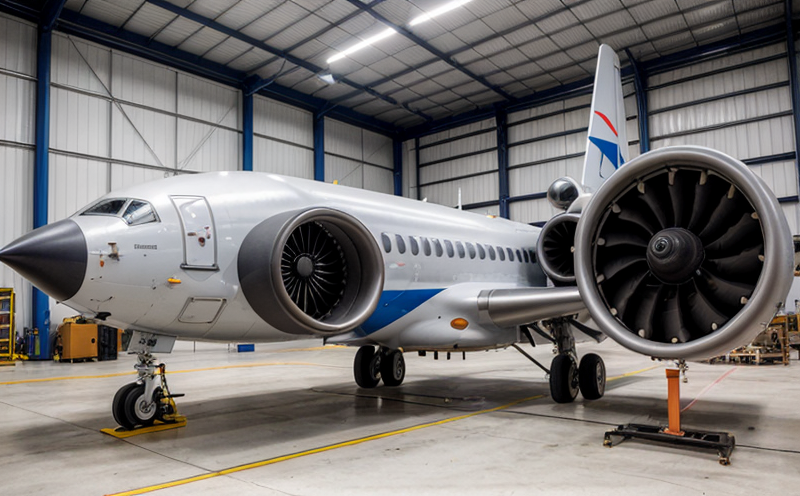Acoustic Fatigue Test of Turbine Blades
The acoustic fatigue testing of turbine blades is a critical procedure within the aerospace and defense industries. This test assesses how well turbine blades withstand high-frequency sound and vibration loads, which are common in jet engines, aircraft turbines, and military propulsion systems. The goal is to ensure that these components maintain their structural integrity under real-world operating conditions, thereby enhancing safety and operational reliability.
The testing process involves subjecting the blades to controlled acoustic fatigue cycles using advanced test rigs capable of generating precise sound pressure levels and frequency ranges. Specimen preparation includes ensuring the blade geometry matches production specifications closely and applying appropriate surface treatments if necessary. The instrumentation used for this test typically includes accelerometers, microphones, and data acquisition systems that capture detailed information about the stress-strain behavior during each cycle.
One of the key challenges in acoustic fatigue testing lies in simulating realistic environmental conditions while maintaining repeatability across multiple tests. This requires careful calibration of both input signals and response measurements to account for variations due to manufacturing tolerances or differences between individual specimens. Compliance with international standards such as ISO 18439-2 ensures that the results are comparable worldwide.
Another important aspect is understanding the relationship between acoustic loading parameters like intensity, frequency content, and duration on material properties of the turbine blade. Research has shown that certain frequencies can cause resonances within specific regions of the structure leading to premature failure if not properly accounted for during design and testing phases.
During a typical acoustic fatigue test, engineers monitor various performance indicators including strain distribution along different sections of the blade, crack initiation sites, and overall structural deformation. Advanced computational tools are often employed alongside experimental setups to predict potential weak points before they become visible through macroscopic inspection methods.
The results from these tests play a crucial role in optimizing designs for future generations of quieter, more efficient engines without compromising on performance or safety standards. By incorporating feedback gained from acoustic fatigue testing into iterative design processes, manufacturers can continue pushing boundaries towards achieving optimal balance between noise reduction and structural robustness.
| Industry Applications |
|---|
| Aerospace & Defense |
| Aviation |
| Military Propulsion Systems |
| Spacecraft Engines |
| Use Cases and Application Examples |
|---|
| Testing new materials for improved sound absorption properties. |
| Evaluating design changes aimed at reducing noise emissions from aircraft engines. |
| Investigating the impact of environmental factors on turbine blade durability under extreme conditions. |
| Determining optimal operating parameters to extend service life without sacrificing efficiency or reliability. |
Why It Matters
The importance of acoustic fatigue testing cannot be overstated when considering the safety and longevity of critical components like turbine blades. In aviation, for instance, unexpected failures can lead to catastrophic accidents resulting in loss of life and significant economic losses. Similarly, in military applications where stealth technology is paramount, any increase in noise signature could compromise mission objectives.
From a regulatory perspective, compliance with standards such as MIL-STD-1278 or IEC 60945 ensures that products meet stringent quality control thresholds before being deployed into service. This not only protects end users but also fosters trust among stakeholders involved throughout the supply chain.
In addition to enhancing safety and meeting regulatory requirements, acoustic fatigue testing helps drive innovation by providing valuable insights into material behavior under complex loading scenarios. These findings can inspire new approaches in lightweighting materials or developing novel manufacturing techniques that improve both performance and cost-effectiveness.
The aerospace industry is constantly evolving with advancements in propulsion systems driven by technological breakthroughs and changing market demands. As manufacturers strive to meet these challenges, acoustic fatigue testing remains an indispensable tool for ensuring robustness and reliability across all aspects of design and development.





